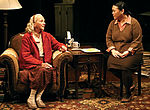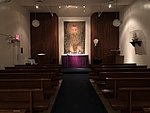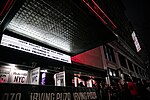Lüchow's

Lüchow's was a restaurant at 110 East 14th Street at Irving Place in East Village (near Union Square) in Manhattan, New York City, with the property running clear through the block to 13th Street. It was established in 1882 – at a time when the surrounding neighborhood was primarily residential – when a German immigrant, August Lüchow, purchased the cafe where he worked as a bartender and waiter. Lüchow's remained in operation at this place for a full century, becoming a favorite establishment for people in the entertainment world, helped by its proximity to the Academy of Music, the city's opera house, as well as Steinway Hall and Tammany Hall, where other entertainment was offered.Although in the 1930s columnist O. O. McIntyre had written "In a changing world, nothing changes at Lüchow's", eventually even the long-running establishment came to an end, closing after an attempt to stimulate business in 1982 by moving to the Theater District. This new effort failed and ended in 1984, leaving behind satellite locations which closed permanently in May 1986. The 14th Street building was finally demolished in 1995 after being gutted by a fire the year before.
Excerpt from the Wikipedia article Lüchow's (License: CC BY-SA 3.0, Authors, Images).Lüchow's
East 14th Street, New York Manhattan
Geographical coordinates (GPS) Address Nearby Places Show on map
Geographical coordinates (GPS)
| Latitude | Longitude |
|---|---|
| N 40.733888888889 ° | E -73.989027777778 ° |
Address
University Hall
East 14th Street 110
10003 New York, Manhattan
New York, United States
Open on Google Maps










